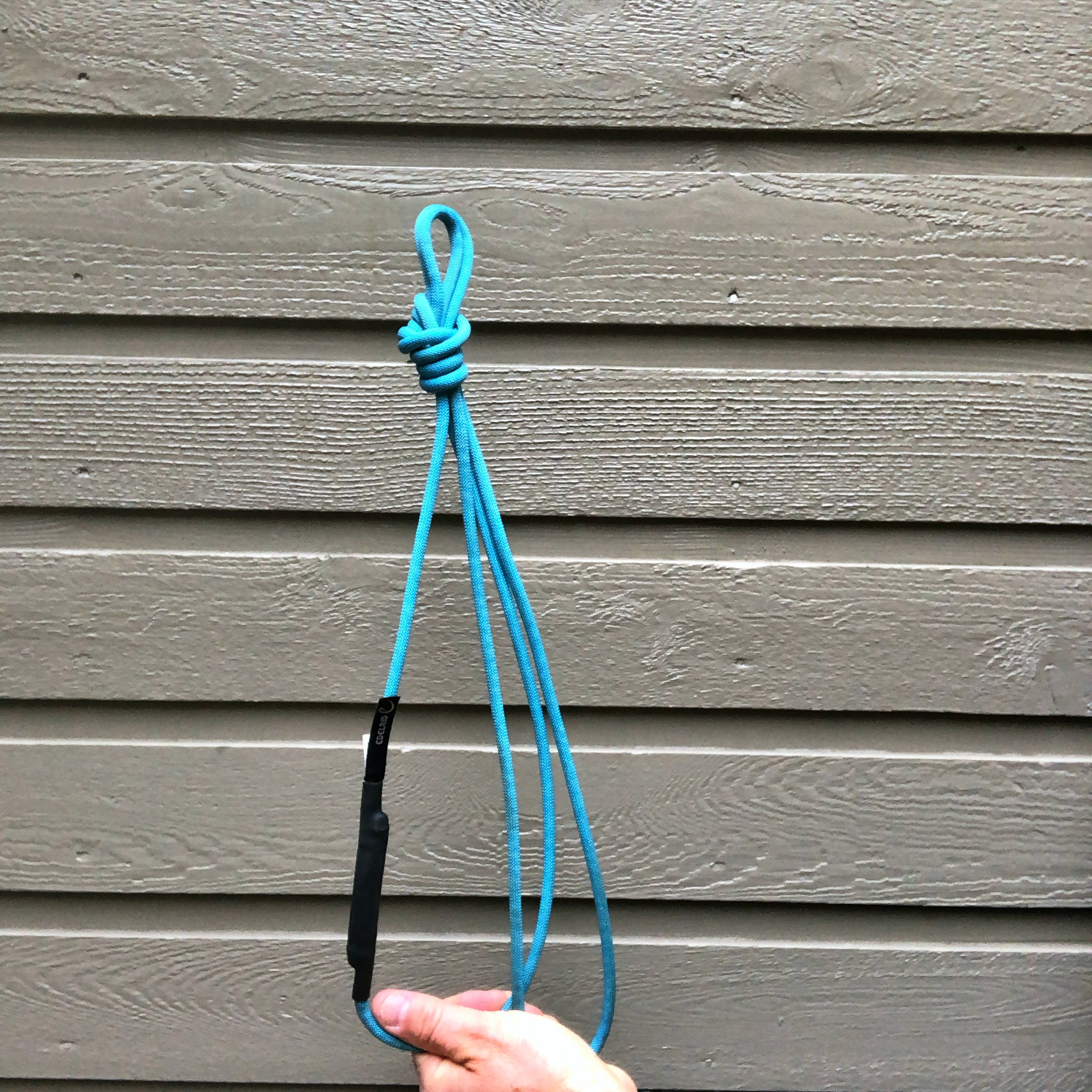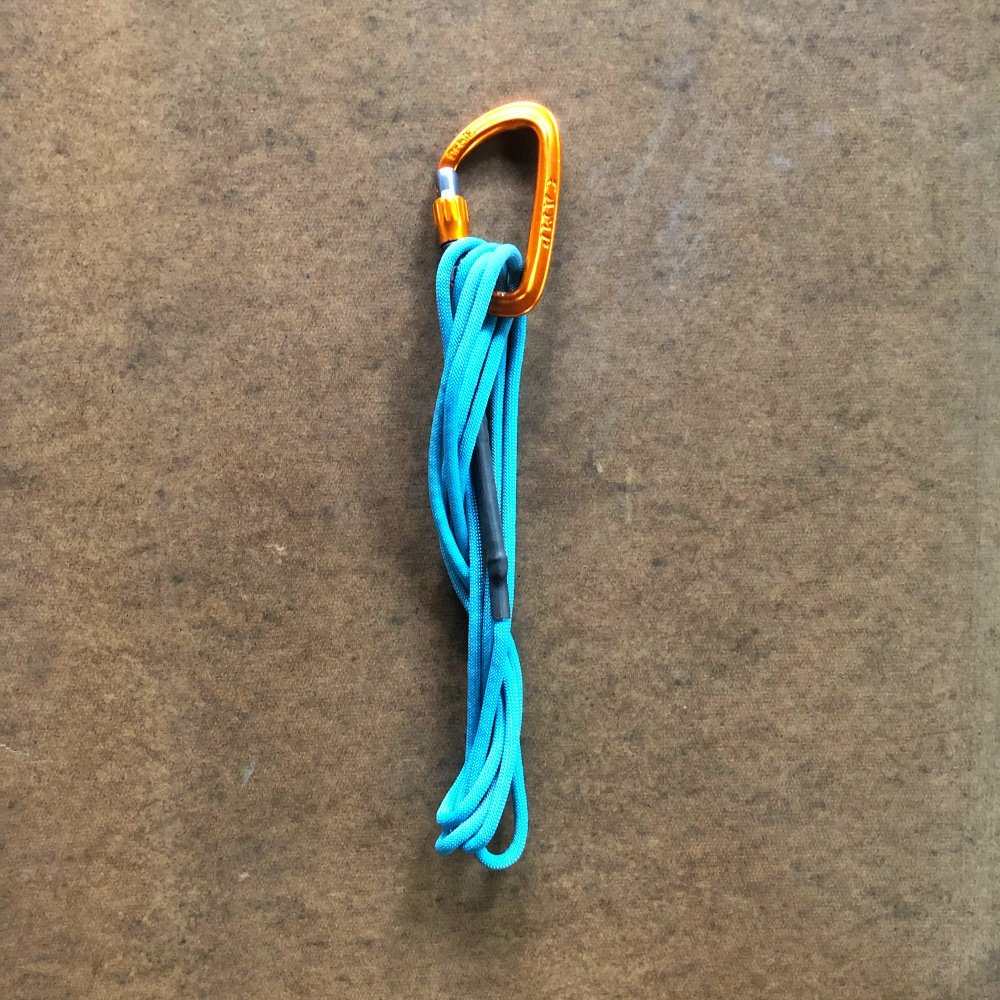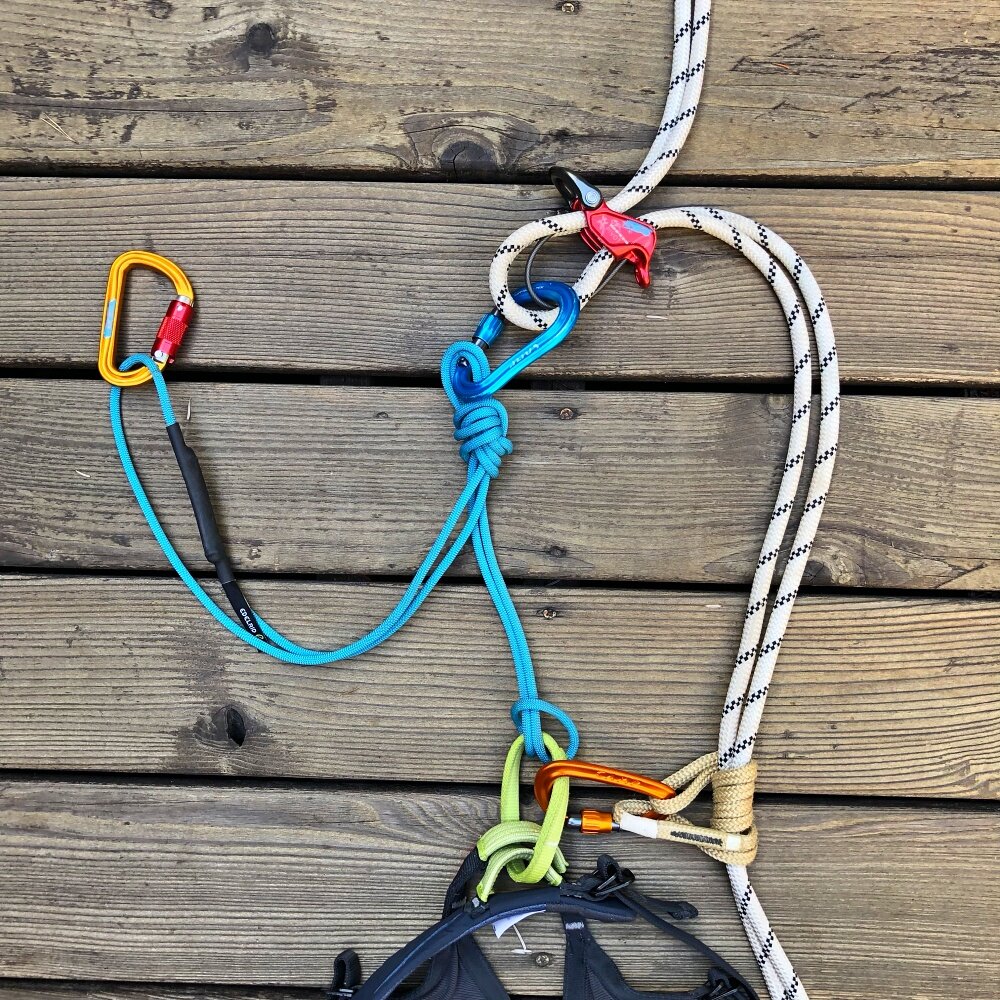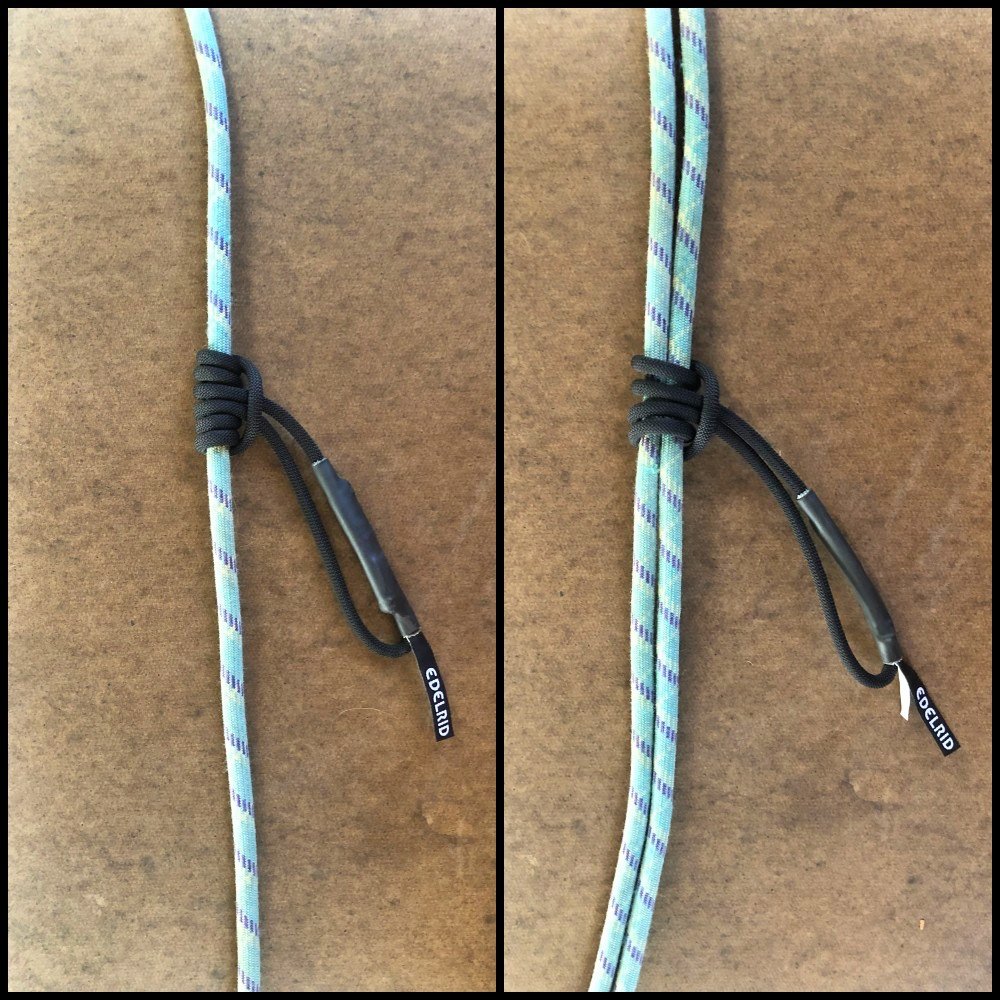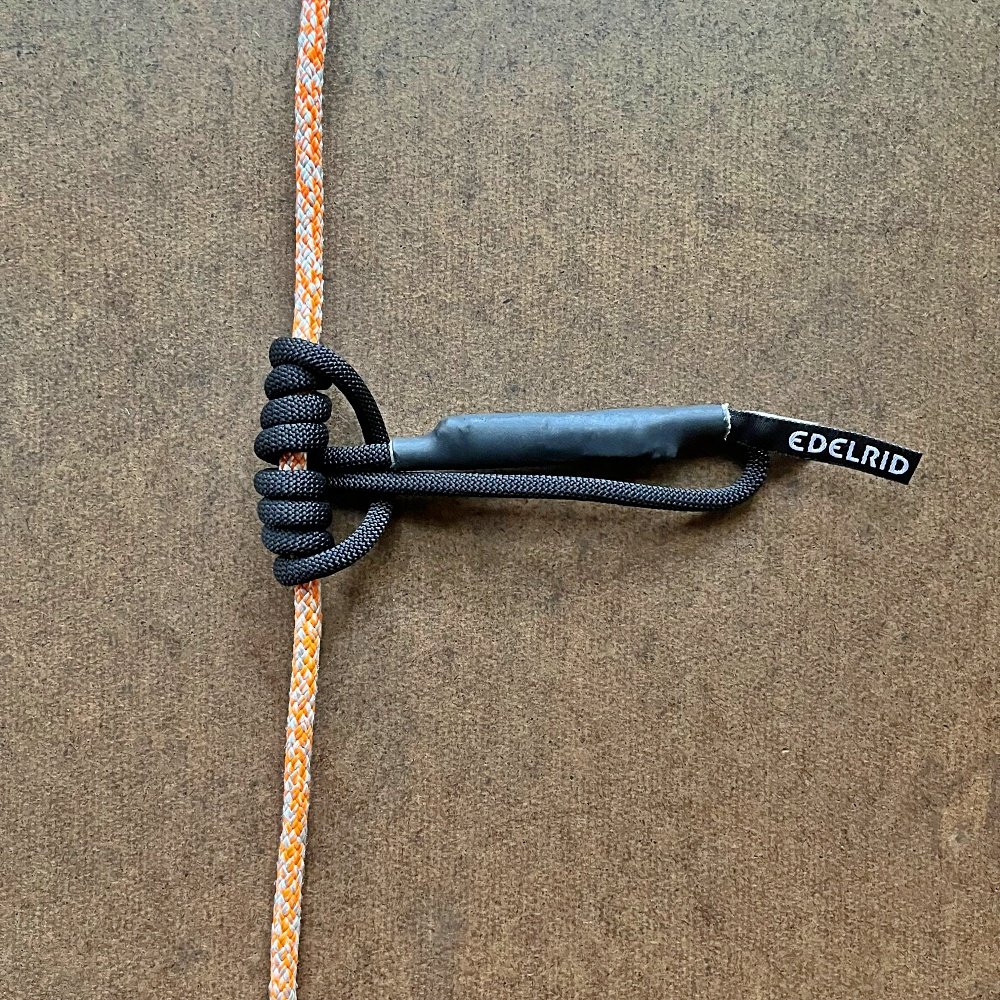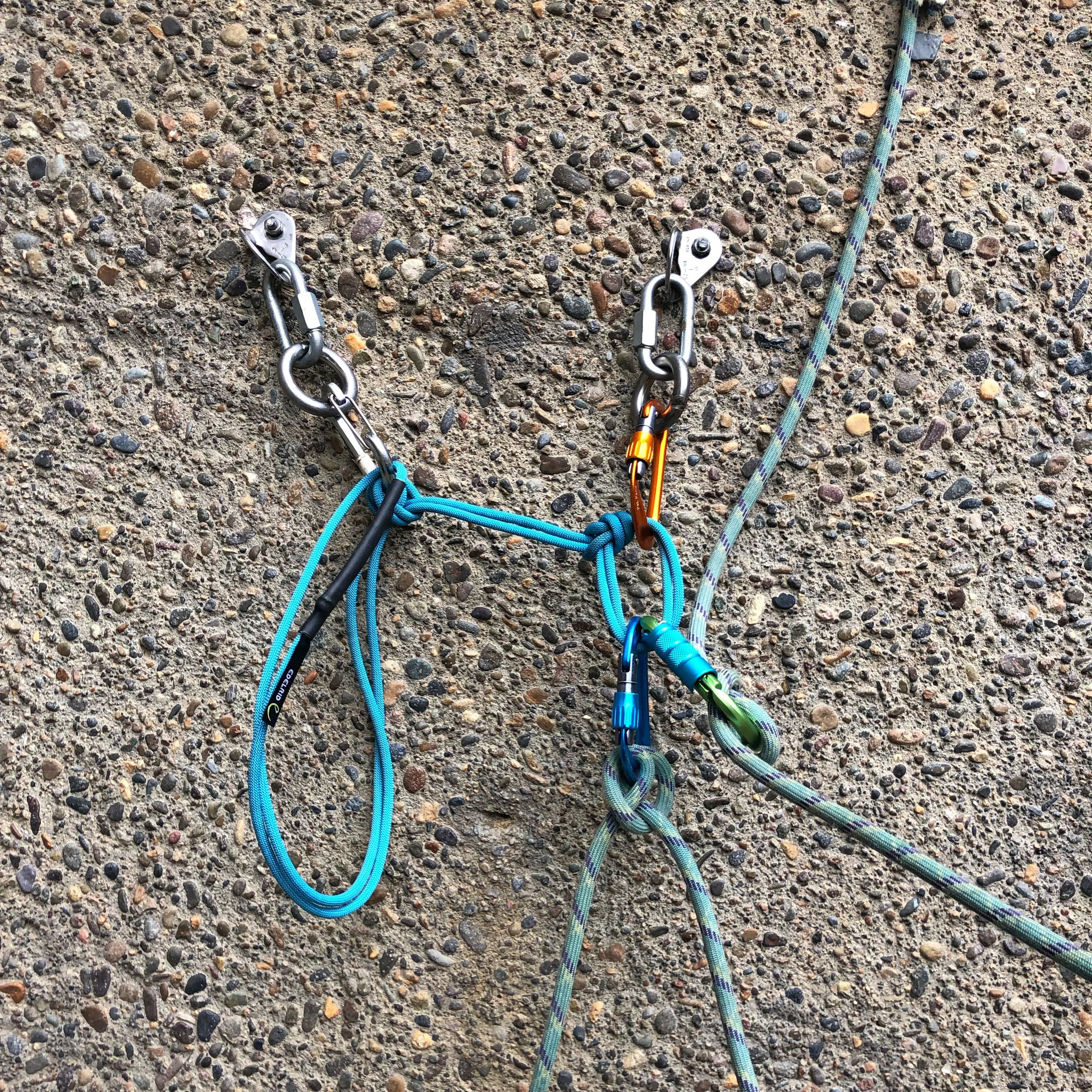Edelrid Aramid slings
120 cm Edelrid Aramid sling; stiff enough to pretty much stand up by itself!
Note, I bought my Aramid slings myself. There are no ads, paid product promotions, affiliate marketing links or similar fluff on Alpinesavvy. In the rare cases where a company sends me a product for free, and I review it, I’ll always let you know.
Dyneema slings are great for clipping protection when climbing. They are light, strong, fairly inexpensive, and absorb minimum water. However, for anchor building they have a few drawbacks.
If you tie an overhand knot in them, it can be really difficult to untie (a figure 8 is a bit easier).
Many people have a fear (perhaps mostly unfounded?) that the knots weaken the webbing to a dangerous level. (That’s an entire topic onto itself, which we cover in this article.)
The German company Edelrid makes a sling that’s an attractive alternative: It’s an Aramid (kevlar) cord, that has a sewn connection. This sewing that keeps the bulk down, and eliminates the permanent bend of the material inside of a knot, which may cause the fibers to be damaged over time.
Kevlar cord has been around for a long time, but fell out of favor because it was thought that the fibers can start to cut through each other after repeated flexing at the same place, which you might find if you made a cordelette with, say, a triple fisherman's knot, and never untied it.
So what's the deal? Does repeated load cycling weaken Kevlar to a dangerous level? I asked Edelrid about this, and they sent me an interesting PDF article from the German Alpine Club (DAV), who has tested this extensively. (Here’s a link to that article.)
“Aramid's vulnerability for changing flexing loads was discussed early on, but has shown itself to not be relevant in real life. The number of flexes required to weaken the fibre cannot really be reached during the product's ten year life-span."
Here are more comments from an Edelrid product manager about these slings:
We have done in house cycle bending tests, and found no notable results.
Tying knots in the aramid cord sling is perfectly fine, but we always recommend storing slings untied, to let the material rest.
Always assume that a knot will lower the tensile strength of any sling by 50%, since this is the worst case scenario. The affect of a knot on any material varies greatly between the kind of knot and how well it was tied/dressed.
The Aramid Cord slings are unique in their stiffness. This makes them perfect for threading in ice or through holes in the rock, or even for throwing them around a rock that the back can’t be reached.
Compared to a normal webbing sling of nylon or Dyneema, the Kernmantle construction of the Aramid Cord slings (and our Tech Web), offers superior safety (cut resistance, abrasion, aging, UV degrading, etc).
They’re easy to rack if you use the “twist” method: double the sling, twist it a few times, and clip the ends together.
I've been using Edelrid Aramid slings for a while now, and it's becoming my go-to for lots of applications. It comes in various lengths; I have a 30 and 120 cm. Why do I like ‘em?
Robust construction, burly outer sheath that's resistant to wear
Nice and stiff, easier to thread through chockstones and behind rocks
Very easy to untie after loading
In all fairness, let's look at a few drawbacks.
They are expensive compared to most other slings.
Their stiffness, which makes some helpful in some areas, makes them a bit awkward to carry as alpine draws. You probably don't want to replace all your Dyneema slings with these, but having maybe a 30 cm as a friction hitch, a pair of 60 cm for clipping gear, and a 120 cm for anchor building might be a good start.
Where do they shine?
Threading around / over a chockstone, icicle, rock spike or other natural feature
Standard two piece bolt anchor, statically equalized
Rappel extension
Friction hitch / prusik
Fixed point lead belay
1) Threading around /over a chockstone, icicle, rock spike or other natural feature
Because of the stiffness of the material, you can poke it around a chockstone or through a small hole and grab it on the other side more easily than a normal sling. The heavy duty sheath protects against abrasion.
image credit: Max Lurie, @alpinetothemax
2) Standard two piece bolt anchor, statically equalized
Note the figure 8 knot. This is usually easier than an overhand to untie after taking a big load. However, with the stiff sheath, even an overhand is quite easy to untie.
3) Rappel extension
Works great as a rappel extension, again because you don't need needle nose pliers to untie the knot when you're done. (This is one of many ways to set up a rappel extension. Here's a complete article on the topic, with several more examples using this sling.)
4) Friction hitch / prusik
The 30 cm works great as an all-purpose friction hitch and rappel backup. The grippy sheath grabs really well on a skinny rope. The Kevlar is very heat resistant, so on a fast rappel that’s helpful.
It's comparable to the popular Sterling HollowBlock, also a great piece of kit. Similar to the HollowBlock, when this cord is under body weight load you can release it by giving it a good tug. This can be very helpful in certain self-rescue situations.
Note that because of the stiffness and sewn area, the French prusik / autoblock hitch doesn’t work so well with the 30 cm length as a rappel backup. The two wrap prusik is probably a better choice, see photo below.
As with any kind of auto block rappel backup, it's good practice to get used to one kind of cord, and get a feel for how it works with a variety of different ropes. Be sure and practice on something like a staircase before you ever try it for real.
Photo: Triple wrap prusik on a single strand on the left, double wrap prusik on double strand rappel backup on the right.
Here's another interesting application for the 6mm, Edelrid aramid sling: if you do a 4 wrap prusik, it holds on a 6 mm Petzl RADline. Normally, a prusik hitch made with cord that's the same diameter as the rope you're putting it on slips and doesn’t work, but here it does, at least under my body weight.
(Note that this prusik does NOT work on the Petzl PURline, which is a similar 6mm specialty rope, but which has a sheath that’s much more slippery than the RADline. Yes, I tested them both.)
5) Fixed Point Lead Belay
The 120 cm is great for a fixed point lead belay, where you belay the leader directly off the anchor. We cover that technique in detail here.
Probably the thing I like most about this cord is that it's very easy to untie after its been loaded. Here's a short video clip of me bounce testing on an overhand knot, notice how easy it is to untie. Try that with a skinny Dyneema sling!

